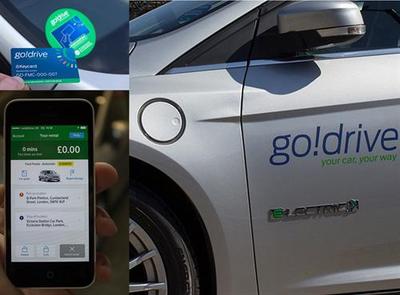Ford Car Buying Trends 2015 Shows Consumers Aligning with Ford Smart Mobility
 |
- Ford Car Buying Trends 2015 shows consumers aligning with Ford Smart Mobility - connectivity, mobility, autonomous vehicles, customer experience and big data
- Technology that can help drivers park, avoid collisions, and maintain a steady speed and distance from vehicles ahead, grows in popularity
- One in three Ford cars sold in the past year were equipped with parking systems that help drivers find and steer into parking spaces
- Compared with the previous year, nearly twice as many cars were equipped with automatic braking tech
- More than three in four drivers buy cars with voice-control systems that can be used to make calls, play music, find restaurants, and set navigation
BRENTWOOD, ESSEX -- Aug. 26, 2015: Autonomous vehicles may still be a way down the road, but drivers across Europe are showing an increasing appetite for the semi-autonomous technologies that are the building blocks of tomorrow’s cars, according to a new Ford Motor Company study on buying trends in Europe.
Ford Car Buying Trends 2015 studied new car buying habits in 22 countries across Europe, highlighting regional trends and national differences. The study showed significant increases in the number of cars with technologies that help drivers to park, avoid collisions, and maintain set speeds and distances from vehicles ahead.
“While manufacturers including Ford are working toward autonomous vehicles, our customers are already embracing many of the smart technologies that make driving and parking easier and safer,” said Roelant de Waard, vice president, Marketing, Sales and Service, Ford of Europe. “We are seeing increasing demand for features that relieve the stresses of driving, and make it more enjoyable – for example, people have very quickly become accustomed to systems that help them to find a suitable parking space and reverse into it.”
Advanced technology on the move
Ford earlier this year announced Ford Smart Mobility, the company’s plan to help change the way the world moves through innovation in connectivity, mobility, autonomous vehicles, customer experience and big data.
Ford has announced 25 global Ford Smart Mobility experiments – several of which are located in London and included projects that will test different ways of alleviating congestion in dense urban areas. The recently-announced GoDrive car-sharing service, for example, offers flexible, practical and affordable access to a fleet of cars for one-way journeys with easy parking throughout the city.
In the U.S., a fleet of fully autonomous Ford Fusion Hybrid research vehicles, which mirrors the sensor and computing technology in Ford vehicles today, is undergoing further development and ongoing tests as Ford shifts its autonomous vehicle efforts from a research programme into an advanced engineering project.
Active Park Assist uses sensors and the vehicle’s steering system to help drivers identify a suitable space and steer in to it. The system was fitted to more than one in three Ford cars in Europe, up from 28 per cent compared with the previous year.
Active City Stop can help reduce the severity of rear-end collisions by automatically braking if a driver does not respond to slowing traffic ahead. In the past year more than one in eight (13 per cent) cars produced were equipped with the system, up from seven per cent compared with the previous year.
Adaptive Cruise Control enables drivers to maintain a set distance from the vehicle in front, even if the vehicle is travelling at a slower speed. In the past year more than half of new Ford cars in Europe were equipped with some kind of cruise control technology, rising from 48 per cent to 52 per cent.
Lane Keeping Aid detects an unintentional lane departure and applies steering torque, alerting drivers to provide the necessary steering correction. Throughout Europe the number of vehicles sold with Lane Keeping Aid rose by 20 per cent.
Listening to you
From first being introduced in Europe in 2012, Ford’s voice-activated connected systems have quickly found their way into most new cars. Last year, 78 per cent of all Ford vehicles were equipped with SYNC systems – up by 10 per cent year‑over-year compared with the previous year.
SYNC 2 can enable drivers to talk to their car using simple, conversational language to operate phone, entertainment, climate and navigation systems, even bringing up a list of local restaurants by saying: “I’m hungry”.
Blue makes an impact
Ford Car Buying Trends 2015 also looked at other purchase patterns including colour. It revealed that in the past year, of more than 1,000,000 cars sold in Europe, white was the top colour ahead of black, silver, grey, and blue – the latter being the fastest-growing choice for Ford cars.
“When it comes to car buyers tastes there are a few things that remain consistent over the years and many aspects that change and evolve,” de Waard said. “We study these changes – and some can be surprising – in order to better serve customers across Europe.”


